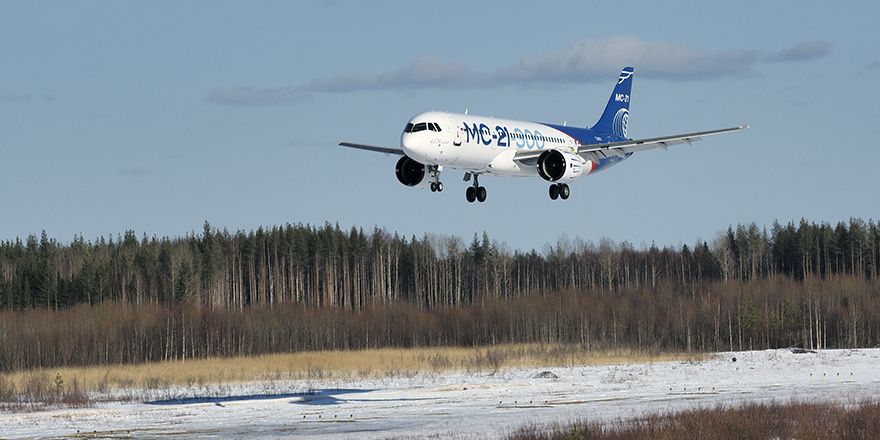Since 2022, imported technologies and components of the aircraft industry have become unavailable to Russia due to political reasons of its former partners. At the same time, import substitution and transition to domestic aircraft and helicopters ensures technological sovereignty, reliability, independence and safety of the Russia aviation industry. The comprehensive program for the development of the aviation industry until 2030, adopted in the summer of 2022, provides, in particular, an increase in the production of helicopters and turboshaft engines for them.
Adjustments made to the program in August 2023 take into account the forecasted needs of helicopters for operating companies, as well as the growth of production capacity of the United Engine Corporation enterprises. As a result of these changes, the total number of turboshaft engines produced, excluding the production of replacement propulsion systems, should total 1,528 units, and helicopters – 764 machines.
The most mass turboshaft engines used in Russian helicopters are the TV3-117 and the VK-2500. Both engines were developed by the Klimov Design Bureau, only the first one was developed in the USSR, the second one – in Russia. The TV3-117V was produced in Zaporozhye at the Motor Sich plant, and after the 2014 Maidan, when Ukraine began to wind down its cooperation with the Russian Federation, serial production of the VK-2500 engine began at UEC-Klimov in the St. Petersburg. Both engines have similar technical characteristics and are used on the same types of helicopters. Therefore, in the tables of the Integrated Program they are indicated with a slash, which emphasizes their interchangeability.
VK-2500 has increased power, is equipped with a digital control system and is capable of operating at high altitudes. This engine was tested in the mountains of Tibet as part of the Mi-17-V5 helicopter power plant and proved its reliability and efficiency in extreme high altitude conditions. According to UEC-Klimov, the engine has a rated life of 9,000 hours and an overhaul life of 3,000 hours. VK-2500 has become the standard choice for new serial helicopters, it is also offered for remotorization of previously produced machines.
The production of the VK-2500 engine is organized in cooperation with the Ufa-based UEC-UMPO, while the V.V. Chernyshyov Helicopter Plant produces the free turbine modules. The axial compressor module is produced by MMP named after V.V. Chernyshyov. The final assembly of the propulsion system is carried out at the St. Petersburg-based UEC-Klimov. It is planned to produce 934 VK-2500 engines by 2030, as well as 160 replacement engines. About 100 power units will be produced annually and will be installed on various types of helicopters, including Mi-8MTV1, Mi-8AMT, Mi-171/A2/A3, as well as Ka-32A11M and Ka-32A11BC. As a result, by 2030, the total number of helicopters produced for which the VK-2500 is designed should reach 428 units.
The TV7-117V turboshaft engine is a helicopter version of the TV7-117SM free turbine GTE and is designed for installation on the Mi-38 helicopter. The certificate for the TV7-117V was issued in 2015. The engine is equipped with a new digital electronic control and monitoring system BARK-6V of FADEC type, created on the basis of a single unit of automatic regulation and control.
The engine is operated according to the technical condition in accordance with aviation rules AP-33 until the assigned resource of any of the main parts is reached without mandatory removal of the engine for repair. The assigned resources of the main parts are specified in the data card of the type certificate. On June 29, 2023 the approval of the main change of the type design was issued, according to which the resources of main parts were increased.
The peculiarity of the TV7-117B engine family development is to ensure the safety of helicopter flight in extreme situations by introducing a 2.5-minute emergency mode of 3750 hp. This was achieved by optimizing the design of the inlet guide tube and the first stage of the axial compressor, as well as changing the material of high-pressure turbine blades. The corresponding changes to the type certificate data card were made on July 1, 2022.
It is planned to gradually increase the production volume of TV7-117B engines from four units in 2025 to 16 power units annually from 2028. A total of 78 TV7-117V engines, plus eight reserve engines, which corresponds to 39 Mi-38 helicopters, are planned to be produced in the Comprehensive Program.
The design of the VK-1600V engine for the Ka-62 helicopter began in 2019, at which time a preliminary design was developed. Calculations of all elements of the power unit’s flow part were performed using 3D optimization techniques, and composite materials and additive technologies are used in its production. In 2020, the technical specification was defended and design documentation for the engine-demonstrator was prepared. In mid-2021, the demonstrator itself was assembled and tested.
The first VK-1600V prototype was manufactured in 2022, and in 2023, UEC-Klimov plans to assemble two more prototype engines. Currently, preparations are underway for a set of certification tests and the release of proof documentation. The start of tests as part of the Ka-62 helicopter is scheduled for June 2024. According to the plan, in 2025 it is expected to receive a type certificate and start serial production of the VK-1600V engine.
UEC notes that the powerplant will have a power output of 1,400 horsepower in takeoff mode and 1,750 horsepower in 2.5-minute power mode. The VK-1600B will have high fuel efficiency and low life cycle cost. According to the Integrated Program, by 2030 it is planned to produce 180 propulsion units, as well as 12 replacement units. This corresponds to the production of 90 Ka-62 helicopters.
The new VK-650V helicopter engine is designed for installation on Ansat and Ka-226T light helicopters. Like the VK-1600V, one of the key features of the VK-650V is the use of 3D-optimization techniques in the development of the flow section. This allows to achieve the optimal shape and geometry of elements, which in turn increases the fuel efficiency of the engine. Another feature is the presence of an autonomous closed-type oil system, which provides reliable lubrication of engine parts and increases its service life.
Work on the VK-650V began in 2018, and in May 2023, a set of tests of the demonstrator was completed. Now specialists of UEC-Klimov conduct engine tests and prepare proof documentation for obtaining a type certificate already in 2024. UEC-Klimov plans to build 10 prototypes in 2025, four of which will be used in flight tests as part of the Ansat helicopter. Also, in the same year it is planned to start delivery of serial engines. According to the Comprehensive Program, from 2025 to 2030, 336 VK-650V power units and 34 substitutes should be produced, which corresponds to the construction of 167 Ansat helicopters and one Ka-226T.







